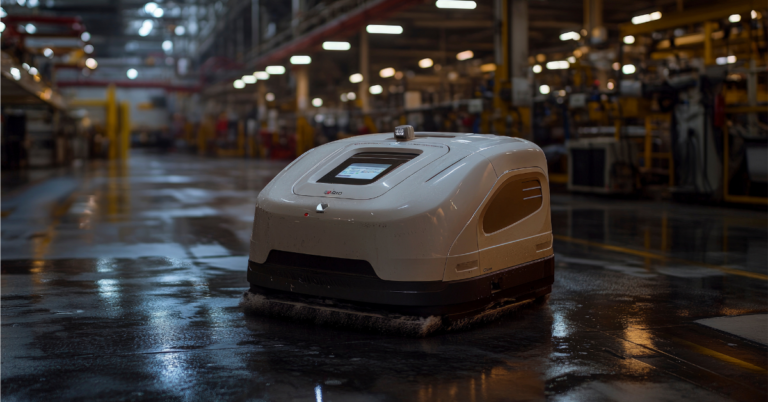A few weeks back, we posted a short video introducing the concept of “ratio” as it applies to scaling robotics businesses. For those who haven’t seen it, the TL;DR is as follows:
“Ratio” is a fundamental measure of workforce sustainability, considered as the company’s quantity of technical team members compared to the company’s total number of robots in the field (i.e. Team : Robots). By “technical team members”, we mean any employee who’s directly responsible for developing, supporting, and/or managing deployed machines. The qualifier, “in the field”, is used to ensure there’s no confusion between one’s deployment potential and one’s actual fulfillment (i.e. Robots deployed to production, at customer sites, etc).
Early in a company’s life-cycle, it isn’t uncommon to see 25-person teams managing 10 robots. However, you don’t need an MBA to recognize that such an imbalance simply isn’t sustainable. For a robotics business to scale effectively, the ratio of team members to robots in the field should (ideally) always be going down.
This rule of thumb speaks to an extremely important (but not necessarily intuitive) lesson — as the size of your fleet scales, so should the efficiency of your operations. While your total number of technical team members will rise with the size of your fleet, these two metrics should never scale in direct proportion (a.k.a. At a rate of 1 to 1). Instead, your team should be evolving in such a way that the same number of technical team members is able to manage an increasing number of robots in the field. By increasing knowledge, optimizing workflows, and fine-tuning processes, your team can reach that goal. This applies whether you are in the RaaS space (i.e. you ‘rent’ your robots) or in the direct robotic hardware sales space (i.e. you sell your robots).
Here’s a quick sketch of an ‘ideal’ scaling goal:

The ideal situation is when your business hits its growth curve at the same time your team starts to improve its overall performance and efficiency. Under these conditions, your business should be able to manage the immediate growth in fleet size without the need for emergency hiring. However, this notion of “doing more with less” is only possible when two fundamental needs are met: 1.) The team has access to timely, accurate information about their fleet; and 2.) The team has the tools and authority to take swift, decisive actions when problems occur.
Even outside the context of immediate growth, both of these conditions provide compounding benefits; meaning, they feed back into multiple aspects of best practices, which in turn improves a company’s overall operational efficiency, customer satisfaction, and more.
The ultimate goal, then, is that a team member who previously managed, say, 10 robots, would later be able to manage 20 robots; with no change to their overall workload and efficacy, and without detriment to service quality. If your startup is able to achieve such a transition, you may want to consider writing a book about your experience – because it’s far from ordinary.
What happens in reality:

Now that you understand the ideal, it’s time to address the reality. By and large, robotics companies find themselves scaling their teams, and their fleets, much more linearly. This near-universal phenomenon is most often a side-effect of the various concessions and compromises that startups frequently feel they have to make during the early stages of growth. Unstable back-office tooling, time-delayed or incomplete access to information, and entrenched bottlenecks — wherein only a small subset of the organization is given the tools and/or authority to take direct action — are all common examples of such compromises.
These early compromises often come back to bite businesses at times of growth, when they’re forced to make rapid, emergency staff increases in order to meet immediate increases in demand and ballooning inefficiencies. Consequently, even though the business is experiencing positive revenue growth, the overall efficiency of the business is hampered. The immediate, unplanned staff increase raises the company’s overhead (often dramatically); which in turn reduces the company’s margins. And therein lies the tragedy of this entire cycle. Startups are forced to make short-sighted, unsustainable decisions early on, in order to quickly initiate growth. But when the growth comes, the very same compromises that made it possible to begin with also vastly reduce its actual value to the company (i.e. profits).
Avoiding the Well-Tread Banana Peel
By understanding the errors of those who’ve come before us, we’re much less likely to commit those errors ourselves. Or, as I like to put it, “identifying the banana peel is the first step to staying on your feet”. Yet, although recognizing pitfalls is a necessary step towards success, it isn’t a guarantee of success itself.
A door with a “Do not Enter” sign is informative, but it doesn’t tell you where the entrance is. So, for those insights, make sure to read Part 2 of this series on our blog – 5 Steps to Scaling Your Robotics Business Sustainably.



